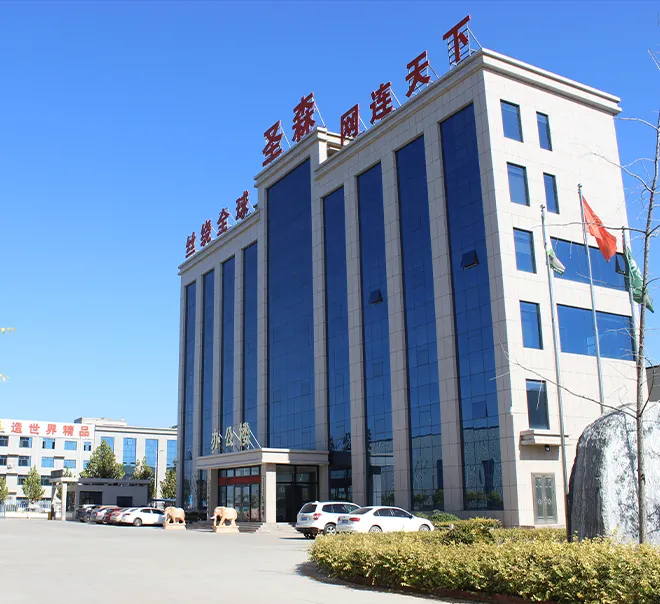-
 Phone:
Phone: -
 Email:
Email:

Exploring the Versatility and Applications of Baling Wire in Various Industries
The Versatility of Baling Wire A Comprehensive Overview
In the world of manufacturing and agriculture, the significance of baling wire cannot be underestimated. This sturdy and reliable material plays a critical role in binding and securing bales of various products, primarily in the agricultural sector. From hay and straw to recyclables and waste materials, baling wire serves as a cornerstone in the efficiency of operations that involve the transportation and storage of bulk goods.
What is Baling Wire?
Baling wire is a type of wire specifically designed for binding bales of materials. It is typically made from high-quality steel, which provides the strength and durability needed to withstand tension and pressure. The wire is commonly available in various gauges and strengths to accommodate different types of materials and bailing machines. The most common applications of baling wire include securing hay, cotton, and silage bales, as well as in recycling processes where scrap metals and cardboard need to be compacted for transport.
Types of Baling Wire
Baling wire comes in various types, differentiated mainly by their coating and application. The most popular types include
1. Galvanized Baling Wire This type is coated with zinc to prevent rust and corrosion, making it ideal for outdoor applications where exposure to moisture is a concern. It is widely used in agricultural settings for securing hay and straw bales.
2. Black Annealed Baling Wire This wire is softer and more malleable, making it easier to twist and tie. Commonly used in cotton ginning, black annealed wire is perfect for applications where a secure but gentle tie is required.
3. Stainless Steel Baling Wire While more expensive, stainless steel baling wire is highly resistant to corrosion and is used in demanding environments, such as marine applications or industries dealing with harsh chemicals.
4. Plastic Coated Baling Wire This type of wire is coated with plastic to provide additional protection against weather elements and is often used for securing garden materials or indoor applications.
Applications of Baling Wire
baling wire

The applications of baling wire are extensive, covering various industries
. In agriculture, it is predominantly used for- Hay Baling Securely tying up hay bales for easy transport and storage. The right baling wire helps maintain the integrity of the bales, minimizing losses due to spills or breakage.
- Cotton Ginning Baling wire is essential in the cotton industry, where cotton fibers are pressed into bales for shipping. The use of black annealed wire allows for quick and efficient bundling without damaging the cotton.
- Recycling In recycling facilities, baling wire is used to compact scrap metals, cardboard, and plastic, making it easier to handle and transport these materials for processing.
Advantages of Using Baling Wire
One of the primary advantages of baling wire is its ability to hold heavy loads without breaking or deforming. This is critical in maintaining the shape and size of bales, ultimately ensuring they are easy to handle and transport. Additionally, baling wire is economical, as it is available in bulk at relatively low prices, making it a cost-effective solution for binding materials.
Baling wire is also incredibly versatile, adapting to a wide range of applications beyond agriculture. Industries that deal with shipping and logistics often use baling wire to bind products securely. Its strength ensures that products remain intact during transportation, reducing the risk of damage.
Environmental Impact
As sustainability becomes increasingly important, baling wire also plays a role in eco-friendly practices. Recyclable materials tied with baling wire are more efficient to transport, reducing carbon footprints by optimizing shipping loads. Additionally, the use of baling wire in recycling processes promotes materials reuse, further supporting environmental efforts.
Conclusion
Baling wire may seem like a small component in the larger machinery of industry, but its impact is significant. By ensuring that bales of hay, cotton, and recyclable materials are securely bound, baling wire enhances efficiency, drives down costs, and supports sustainable practices. As industries continue to innovate and evolve, the role of baling wire will undoubtedly remain integral to operations across various sectors. As we look to the future, understanding and optimizing the use of baling wire will be crucial for driving forward the agricultural and recycling practices that underpin our economy and environment.
-
Wire Mesh for Every Need: A Practical SolutionNewsJul.25,2025
-
Steel Fences: Durable, Secure, and Stylish OptionsNewsJul.25,2025
-
Roll Top Fencing: A Smart Solution for Safety and SecurityNewsJul.25,2025
-
Cattle Farm Fencing Solutions for Maximum SecurityNewsJul.25,2025
-
Affordable Iron Binding Wire SolutionsNewsJul.25,2025
-
Affordable Galvanized Wire SolutionsNewsJul.25,2025
-
Wire Hanger Recycling IdeasNewsJul.25,2025








